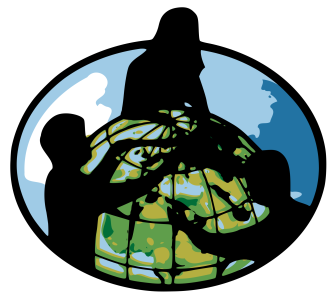This month, I’ll be featuring the voices of female educators in honor of Women’s History Month. More written about this is here.
Guest post by Desiree Napoleon
Considering what it means for me to be a woman in education means that I have to consider the multiple intersections of my own being, show my students the beauty in their own multiple-issue beings, and integrate all of those things to create an atmosphere of bidirectional learning. My students have as much to teach me as I have to teach them.
Considering what it means to be a woman in education means that I have to reach back into the recesses of my head to recall the little girl I was. I have always had women as teachers, but 1986 was the year I had a teacher that I felt a real connection to; it was the first time that I had a teacher that was “like me.” Her name was Elizabeth Brown, and although her complexion was far lighter than my own, the woman who drilled state capitals and vocabulary words was, in every way, a Black woman. We toss the phrase “representation matters” around in some of the social justice work I do, but I don’t think we realize how very important it is until we are faced with an occurrence that has never happened to us before. We encounter someone who makes us realize that we have been missing what they can bring to us our entire lives.
Considering what it means to be a woman in education means that I have to fast-forward into today’s classroom. I see that the representation of me-- dark-skinned, bespectacled, with a shock of auburn hair I wear in locs as homage to my African roots, and a big, loud laugh someone will probably hear down a school hallway in the near future-- is still necessary and still matters. I may very well be one of the first Black woman teachers a little Black girl sees in her journey, and being ready to be a potential catalyst to change a child’s life is absolutely something that I must also consider every moment I wake up.
A child’s education does not start in the schoolhouse. Every day a child wakes up and is taking in what is going on in their environment before they are stepping out the door to go to school, they are learning. So it must be with me.

We live in a pretty small apartment in Hartford, CT. I can hear my next-door neighbor admonishing one or more of her five children to stop playing in the bathroom so that they can get out to the bus stop on time. Yet another mom is cooking what smells like bacon. I myself get up from my laptop to gain status on my ten-year-old’s progress in readying himself for school.
When I step outside I take notice of my neighborhood. There are people scurrying to work and elsewhere already. If the air is cold or warm, I notice. Things like this affect our kids’ performance at school. Who is wearing a coat? Who is not? Mentally, I go over my own checklist as we walk...did this child of mine finish his cereal? I wonder if (insert classmate name here) is OK this morning; s/he seemed a little down when I saw him yesterday. Did I sign the reading log? Will he be able to eat what is offered for lunch today or do I need to bring him a snack at pick-up time? And there is more noticing and checklist work as my day winds down.
Having this mindset that the particular intersections of womanhood I bring to my classroom is paramount to being an educator invested in student success. I think, too, that as the particular woman I am, I bring an aspect of mothering and “loving on” students that can only be a benefit in the long run, and must be considered as valuable when I teach.
Image via The Black Homeschool

Find Christina online:


